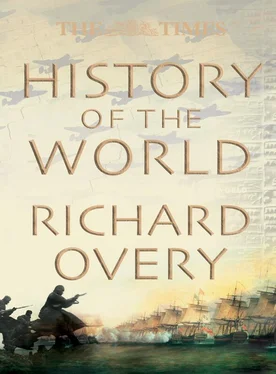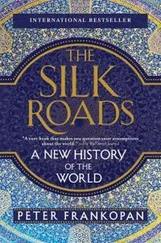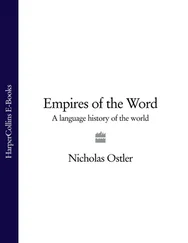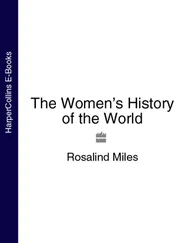c . 3500 TO 1600 BC
THE EARLY EMPIRES OF
MESOPOTAMIA
The broad plain through which the Tigris and Euphrates rivers flow gave birth to the world’s first cities. Irrigation systems made it possible to support substantial populations and complex administrative structures. With urbanization came more developed economies and trade, while competition between cities led to warfare and the first empires.
The earliest cities appeared in Mesopotamia in the second half of the 4th millennium BC: at Uruk, Ur, Tell ‘Uqair and Susa vast and elaborately decorated ceremonial complexes were built as the centres of urban settlements, probably under the leadership of families eager to display their power and their respect for the gods. The fertile plains and valleys watered by the Tigris and the Euphrates produced food surpluses sufficient to support these elaborate new centres and their complex social structures.
The cities were the basic political units of Mesopotamia. Religion was fundamental to their social organization: the rulers of cities presented themselves as favoured servants of the gods, while lower down the social scale agricultural workers had a necessary role in producing the materials for sacrifices and offerings to the gods. The cities established diplomatic and trade relationships with each other, although little is known of the mechanisms for this. Finds of goods from Uruk, the predominant city in Mespotamia from around 3500 BC, have come from as far afield as Susa and Syria. The effect of trade and gift-exchange between cities encouraged the development of a common culture from the edges of the Persian Gulf to Mari in the northwest and Ashur in the north. Although other languages were spoken, the early use of Sumerian as a written language has led to the use of the term “Sumerian” to describe the culture and society of early and middle 3rd millennium.
THE EMPIRE OF AGADE
Towards the end of the 3rd millennium powerful leaders attempted to expand their influence over a wider area. The first was Sargon ( c. 2296–2240 BC), who created a new political centre at Agade, also known as Akkad, before conquering the cities of southern Mesopotamia and claiming authority over areas as far west as Byblos. The empire of Agade was enlarged by Sargon’s grandson Naram-Sin (2213–2176 BC), but within a generation of his death it had disappeared, as its subject cities reasserted their independence. The rise of Agade had long-lasting effects on the region, with Akkadian (whose variants included Babylonian and Assyrian) replacing Sumerian as the main language of Mesopotamia.
A century later the rulers of the Third Dynasty of Ur (Ur III: 2047–1940 BC), beginning with Ur-Nammu, built an empire in southern Mesopotamia, but in common with the other early Mesopotamian empires it was not long-lasting and its decline left a number of important cities competing for power. The centre of activity moved to northern Mesopotamia, and a new elite emerged—the Amorites—who had previously been excluded from power. The most successful Amorite leader was Shamshi-Adad I, who established a short-lived empire in Assyria in the years after 1750 BC. After his death the region returned to a period of competing rulers, as reflected by the assessment of an advisor to Zimri-Lim of Mari ( c. 1714–1700 BC): “There is no king who is strong by himself: 10 or 15 kings follow Hammurabi of Babylon, as many follow Rim-Sin of Larsa, Ibalpiel of Eshnunna and Amutpiel of Qatna, while 20 kings follow Yarim-Lim of Yamkhad.” Soon after this Hammurabi was able to establish an empire of his own, and Babylon became a leading power in the region for the first time.
THE LAW CODE OF HAMMURABI
Hammurabi is most famous for his law code, inscribed on a large stone with a carving of the king in the presence of Shamash, the Babylonian sun god. Although it is presented as a practical collection of laws including the principle of punishment with “an eye for an eye”, the primary function of the document was probably to advertise the achievements of Hammurabi’s reign. After his death, his successors in the First Dynasty of Babylon ruled for about 90 years before the city was raided by the Hittites, and a new phase in the history of Mesopotamia began ( see p. 34).
c . 3100–1000 BC
ANCIENT EGYPT
The history of the ancient Egyptian state is one of successive periods of unification and fragmentation. Counterbalancing this is a pattern of civilization—characterized by such features as the use of writing, an organized system of religion and divine kingship, and dependence on the annual Nile floods for the fertility of the land—which links the different periods together through a span of 3000 years.
Tradition dates the unification of Upper and Lower Egypt to 3100 BC, but it is more accurate to see the emergence of a unified state around this time as the outcome of formative processes stretching back into prehistory. The 4th-Dynasty pyramids at Giza, the largest of which was built by Khufu (Cheops), are the most famous examples of Egypt’s monumental funerary architecture, which expressed the divine status and power of the pharaohs of the Old Kingdom. Construction projects on this scale were possible only because of the enormous wealth of the state, derived mainly from agriculture. The pharaohs controlled this resource through a system of assessment, taxation, collection and redistribution. Central rule broke down at the end of the 6th Dynasty. Although the reasons for this are not entirely clear, it is probable that a series of low Nile floods and consequent famines were one factor in the loss of political and social stability that marks the onset of the First Intermediate Period (from c . 2181 BC).
MIDDLE KINGDOM REUNIFICATION
Egypt was reunified under Mentuhotep of Thebes, and a new era, known as the Middle Kingdom, began. Thebes became an important centre, and its god, Amun, was identified with the sun god, Re, who had been closely connected with royalty since Old Kingdom times. During the 12th Dynasty, which represented the high point of the Middle Kingdom, trading expeditions were sent to Palestine, Syria, and south to Nubia, where the Egyptian presence was consolidated by the construction of several forts clustered around the second cataract. During the Second Intermediate Period ( c . 1720–1550 BC) power devolved to various local rulers until foreigners from the east, known as the Hyksos, extended their authority over a large part of Egypt. The Hyksos were eventually expelled by the independent rulers of Thebes, who reunified Egypt from the south.
EXPANSION AND DISUNITY
During the New Kingdom, military conquests created an Egyptian empire stretching from the Euphrates in the north to Nubia in the south. Within Egypt, imperial expansion was matched by magnificent construction works of tombs and temples. The cult of the most important god Amun-Re was temporarily set back when Akhenaten ( c . 1364–1347 BC) built a new capital at Amarna, where the worship of the Aten or solar disc was promoted.
Under Rameses II Egypt reached a pinnacle of wealth and power, but there are clear indications that from the reign of Rameses III onwards there were growing external and internal problems. Egypt’s empire in Syria and Palestine was lost. Its eastern and seaward borders were threatened by the sea peoples. On the western border, despite the victories of Rameses III, the Libyans posed a continuing and destabilizing problem. Internally, royal power was eroded by such factors as weak rulers, administrative inefficiency and the growing authority of the high priests of Amun at Thebes. By the end of the 20th Dynasty ( c. 1069 BC) Egypt was once again a disunited land.
Читать дальше










